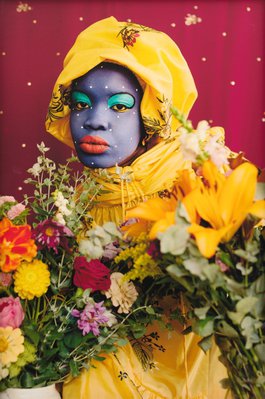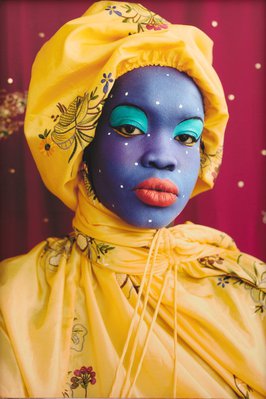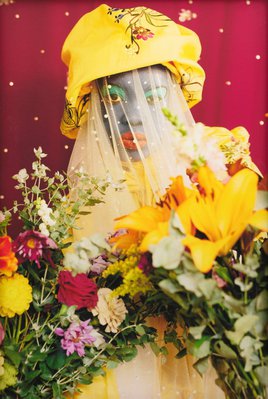




-
Details
- Date
- 2022
- Media category
- Photograph
- Materials used
- five pigment prints
- Edition
- unique
- Dimensions
-
display dimensions variable
:
a - Part a, 125.5 x 83.3 cm
a - Part a, 131.4 x 88.6 cm, frame
b - Part b, 125.5 x 83.3 cm
b - Part b, 131.4 x 88.6 cm, frame
c - Part c, 125.5 x 83.3 cm
c - Part c, 131.4 x 88.6 cm, frame
d - Part d, 125.5 x 83.3 cm
d - Part d, 131.4 x 88.6 cm, frame
e - Part e, 125.5 x 83.3 cm
e - Part e, 131.4 x 88.6 cm, frame
- Credit
- Art Gallery of New South Wales, La Prairie Art Award 2022
- Location
- Not on display
- Accession number
- 78.2022.a-e
- Copyright
- © Atong Atem
- Artist information
-
Atong Atem
Works in the collection
- Share
-
-
About
Atong Atem is an Ethiopian-born, South Sudanese artist and writer based in Melbourne who works mainly with photography. She often uses portraiture to explore migrant stories and postcolonial histories of the African diaspora.
In A yellow dress, a bouquet 2022, Atem extends her ongoing preoccupation with self-portraiture and the history of mid-20th century African studio photography, including the work of Malick Sidibé and Seydou Keïta. These photographers pushed against the pictorial codes of ethnographic photography and gave agency to their subjects.
With this sequential self-portrait, Atem alludes to classical western painting traditions through the postures she assumes and the symmetry of the suite of images. Yet Atem also subverts these reference points, maintaining what she refers to as a ‘decidedly African, postcolonial aesthetic style’ through her emphatic use of colour and texture.
The hyper-stylised costumes and make-up draw attention to the staging of the studio scene, but such ornamentation also carries political weight. For Atem, the face-paint is a symbol of aesthetic alienation and a reaction against the idealisation of whiteness.
-
Exhibition history
Shown in 1 exhibition
Synergy: identity, portraiture and the moving body, Tweed Regional Gallery & Margaret Olley Art Centre, Murwillumbah, 09 Mar 2024–19 May 2024




